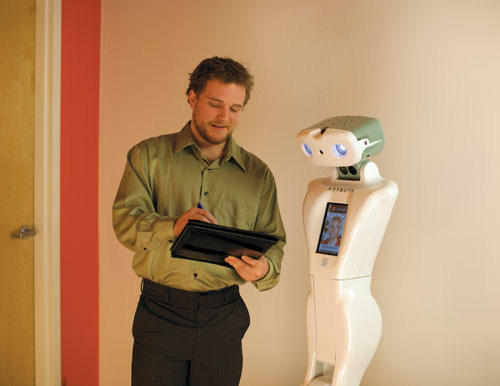Atharva Dhole
Telepresence has manifested itself in many applications, some of which include drone deployment, executive meetings, exploration, international communication, and most notably, healthcare. Telepresence is a medium of communication and control through which a user can manipulate and oversee a process from a different location. This allows one to physically exist in one location, while simultaneously command and associate with projects in another.
This technology has prominent benefits in medicine and healthcare such as teleoperation, minimally surgical techniques, precise movement calibration, and education. Additionally, it serves as a platform to combine multiple perspectives from healthcare professionals. Teleoperation allows the surgeon to guide and monitor an operation in a secure location, permitting him or her to display the procedure to multiple experts, while synchronously controlling instruments with acute precision in real time. This diminishes the human error factor in surgery, therefore lessening the intrusive scope of surgery in its current state. With decreased human error and miscalculation, telepresence ensures a more precise, accurate means of performing surgery.
Proponents of the induction of telepresence into mainstream medicine allude to its applications in rural developments and regions without access to hospitals. Board-certified physicians are able to video conference, oversee, direct, and advise rural clinicians through the patient care process, including surgery. Such is the vision of Cisco, one of the major producers and technical engineers behind the innovation in modern medicine. Through teleconsultation, Dr. Kaveh Safavi, VP and global lead for Cisco’s healthcare practice, believes that physicians can be prompted to modify current medical processes. Information Week cites Dr. Safavi as stating that “one of the things we’ve discovered is doctors have to change the way they practice medicine to take advantage of this form of technology.”
Orlando Health, one of the leading advocates for telepresence in medicine, applauds the use of VSee, a portable, self-contained videoconferencing instrument that integrates mechanisms such as blood-pressure cuffs and pulse oximeters. Wide use of this device in the hospital system has correlated with a dramatic decline in inpatient admissions and an impressive surge in patient satisfaction. With such prospects heading the front of telepresence, the emerging and developing technology has a promising future within and beyond the scope of healthcare.





























